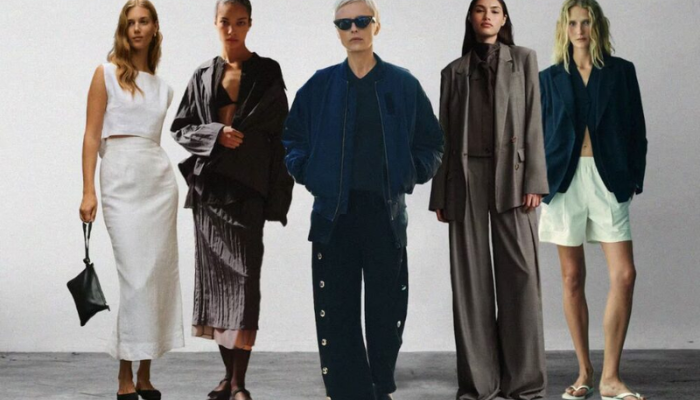The Nordic fashion industry—covering Denmark, Sweden, Norway, Finland, and Iceland—has emerged as a global leader in sustainable design, minimalist aesthetics, and ethical practices. With brands gaining international recognition, the region’s unique approach to fashion is shaping global trends while staying rooted in cultural heritage and environmental consciousness.
In this comprehensive article, we explore the evolution, characteristics, major players, challenges, and future of the Nordic fashion industry.
Table of Contents
- Introduction to the Nordic Fashion Industry
- Historical Background
- Core Characteristics of Nordic Fashion
- Minimalism
- Functionality
- Sustainability
- Minimalism
- Country-by-Country Overview
- Sweden
- Denmark
- Norway
- Finland
- Iceland
- Sweden
- Major Nordic Fashion Brands
- Sustainability and Innovation
- Fashion Weeks and Industry Events
- Challenges Facing the Nordic Fashion Industry
- The Future of the Nordic Fashion Industry
- FAQs
Introduction to the Nordic Fashion Industry
The Nordic fashion industry is renowned for its progressive stance on sustainability, its strong design identity, and a growing influence on international markets. Often associated with clean lines, neutral palettes, and long-lasting quality, Nordic fashion is about more than just aesthetics—it’s a philosophy.
As global consumers increasingly demand transparency, eco-conscious production, and social responsibility,nordic fashion industry the Nordic countries are leading the way, proving that fashion can be both beautiful and ethical.
Historical Background
Fashion in the Nordic region was traditionally shaped by climate,nordic fashion industry function, and practicality. Wool, leather, and fur were staples due to the cold environment. Over time, these utilitarian roots evolved into a fashion sensibility that emphasizes smart design and ethical production.
In the post-war era, especially during the late 20th century, Scandinavian designers began gaining global attention for their simplicity and craftsmanship. The 2000s saw a boom in the visibility of Nordic fashion on the international stage,nordic fashion industry with the rise of both luxury and high-street brands.
Core Characteristics of Nordic Fashion
Minimalism
Minimalism is the hallmark of Nordic fashion. Clean cuts,nordic fashion industry neutral colors, and timeless silhouettes dominate collections across the region. The aesthetic is both understated and refined, making it accessible and versatile.
Functionality
Given the region’s weather and lifestyle, functional clothing is essential. Brands focus on comfort, durability, and versatility.nordic fashion industry From weatherproof outerwear to layer-friendly pieces, functionality is always prioritized.
Sustainability
Perhaps the most defining trait of the Nordic fashion industry is its unwavering commitment to sustainability. The region leads in eco-friendly textiles, ethical sourcing, and circular fashion models. Brands are not only compliant with sustainability standards—they often exceed them.
Country-by-Country Overview
Sweden
Sweden is the powerhouse of the Nordic fashion scene. Home to global brands like H&M,nordic fashion industry Acne Studios, and Filippa K, it balances high-street accessibility with avant-garde design. Swedish fashion is known for innovation, sustainability, and gender-neutral styles.
Denmark
Denmark punches above its weight with a vibrant fashion ecosystem. Copenhagen Fashion Week has become one of the most important fashion events in Europe.nordic fashion industry Brands like Ganni, By Malene Birger, and Stine Goya offer playful, colorful alternatives to the minimalist norm.
Norway
Norwegian fashion is inspired by the country’s natural landscapes.nordic fashion industry Brands like Holzweiler and Tom Wood blend heritage craftsmanship with modern sensibilities. The focus is on ethical sourcing and small-batch production.
Finland
Finnish design is deeply rooted in culture and artistic expression.nordic fashion industry Marimekko is the iconic Finnish brand known worldwide for bold prints and innovative textiles. Helsinki has become a hub for emerging designers focusing on ecological fashion and wearable art.
Iceland
Iceland’s fashion scene is smaller but highly creative.nordic fashion industry Designers like Steinunn Sigurðardóttir and labels such as 66°North reflect the country’s rugged terrain and isolation through unique materials and structures.
Major Nordic Fashion Brands
Here’s a look at some key players shaping the Nordic fashion industry:
- H&M (Sweden) – One of the world’s largest fast-fashion retailers now leading sustainable fashion initiatives.
- Acne Studios (Sweden) – High-end, minimalist fashion with a focus on design innovation.
- Ganni (Denmark) – Trendy, colorful fashion balancing style with sustainable practices.
- Filippa K (Sweden) – Champion of “mindful consumption” and circular fashion.
- Marimekko (Finland) – Iconic for bold prints and artistic expression.
- 66°North (Iceland) – Technical outerwear with high functionality and environmental responsibility.
Sustainability and Innovation
Sustainability is not a trend but a standard in the Nordic fashion industry. Here’s how the region leads:
- Eco-friendly materials: Use of organic cotton, recycled fabrics, and biodegradable textiles.
- Circular fashion: Brands are adopting resale, rental, and recycling models.
- Carbon neutrality: Many companies aim to be carbon-neutral by 2030 or sooner.
- Transparency: From supply chain visibility to fair labor practices, Nordic brands are pioneers in openness.
- Innovation hubs: Cities like Stockholm and Copenhagen support fashion tech startups innovating with AI, blockchain, and sustainable dyes.
Fashion Weeks and Industry Events
The Nordic countries have established premier fashion events that emphasize innovation,nordic fashion industry creativity, and sustainability:
- Copenhagen Fashion Week (CFW): The most influential in the region, with a strict sustainability policy for participating brands.
- Stockholm Fashion Week: Focuses on up-and-coming designers and eco-conscious innovation.
- Oslo Runway (Norway): A growing platform for Norwegian fashion talents.
- Helsinki Fashion Week: World’s first fully sustainable fashion week.
- Reykjavik Fashion Festival: Celebrates Icelandic creativity and style.
Challenges Facing the Nordic Fashion Industry
Despite its success, the Nordic fashion industry faces several challenges:
- Global competition: Competing with fast fashion giants while maintaining ethical standards.
- High production costs: Sustainability and local production often mean higher costs.
- Market saturation: The minimalist aesthetic risks becoming repetitive.
- Climate concerns: Even sustainable fashion has an environmental footprint; continuous innovation is essential.
- Scalability: Smaller brands often struggle to scale internationally due to budget constraints.
The Future of the Nordic Fashion Industry
The future looks promising,nordic fashion industry especially as consumers and investors increasingly value sustainability, transparency, and innovation. Key future trends include:
- Growth of fashion tech: Integration of AI, 3D design, and smart textiles.
- Second-hand and resale models: More brands will launch their own resale platforms.
- Sustainability as law: Governments in Nordic countries may push for stricter environmental regulations in fashion.
- Global collaborations: Expect more Nordic brands to partner with global retailers and influencers to expand reach.
- Cultural expression: A renewed interest in regional folklore and heritage crafts is influencing design directions.
FAQs
What is the Nordic fashion industry known for?
The Nordic fashion industry is known for minimalism, sustainability, high functionality, and ethical production practices. It leads the global conversation on responsible fashion.
Which are the leading fashion brands in the Nordic countries?
Top brands include H&M, Acne Studios,nordic fashion industry Ganni, Filippa K, Marimekko, and 66°North, each with its own unique style and sustainable approach.
How is sustainability implemented in Nordic fashion?
Sustainability is achieved through eco-friendly materials,nordic fashion industry ethical sourcing, circular business models, and innovative technologies such as biodegradable textiles and blockchain traceability.
What is the role of Copenhagen Fashion Week?
Copenhagen Fashion Week is the flagship event for the Nordic fashion industry.nordic fashion industry It sets sustainability standards for the region and showcases both established and emerging designers.
How can small brands compete in the Nordic fashion scene?
By focusing on niche markets,nordic fashion industry storytelling, and high-quality sustainable products, small brands can build loyal customer bases and attract international attention.
Conclusion
The Nordic fashion industry is a beacon of responsible fashion in an increasingly conscious world. It harmonizes design with purpose, proving that beauty doesn’t have to come at the cost of the planet. As global demand for sustainable fashion continues to rise, the Nordic region is not only keeping pace—it’s leading the way.



